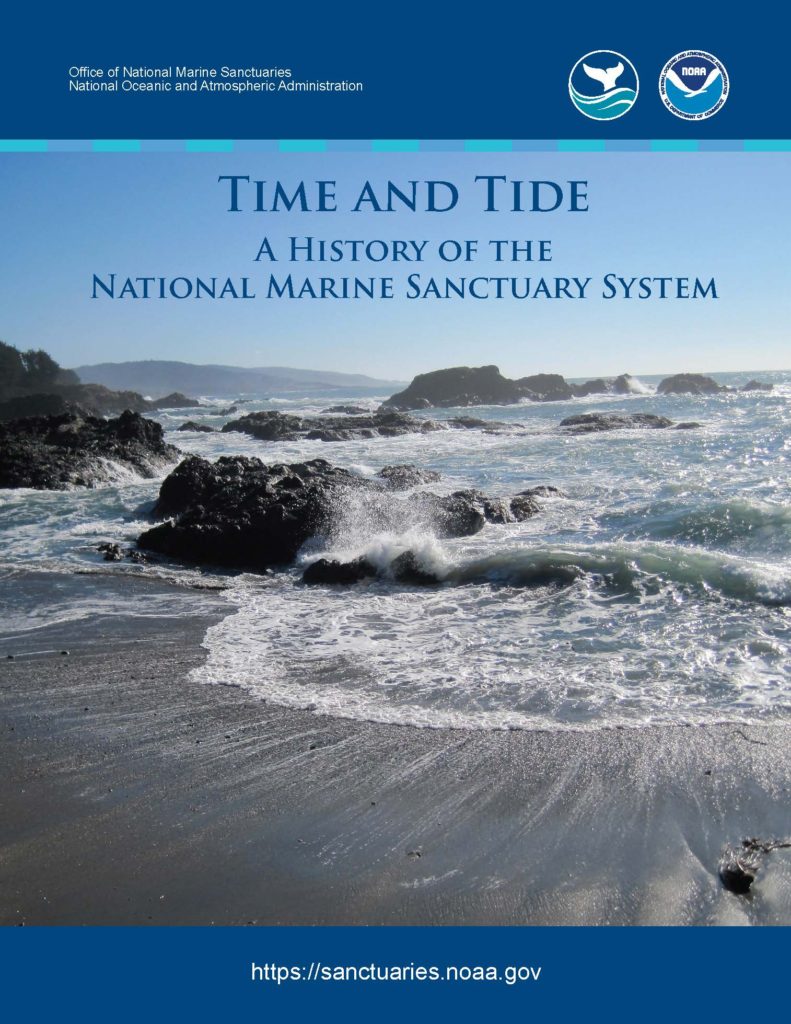Fifty years ago on October 23, 1972, in response to several environmental disasters, Congress passed the Marine Protection, Research and Sanctuaries Act which, among other things, established the National Marine Sanctuary System. Three years later, the underwater resting place of the shipwrecked Civil War ironclad USS Monitor became the first national marine sanctuary in the United States.
Today, NOAA’s Office of National Marine Sanctuaries serves as the trustee for a network of ocean parks encompassing more than 620,000 square miles of marine and Great Lakes waters, an area nearly the size of Alaska. The network includes a system of 15 national marine sanctuaries and two marine national monuments, including Monterey Bay National Marine Sanctuary, that conserve areas with special ecological, cultural, and historical significance.
The National Marine Sanctuary System supports coastal communities and drives local economies by providing jobs and opportunities for people to discover, recreate, and form lifelong connections with these spectacular places.
Sanctuaries connect people and communities through science, education, and stewardship. We rely on these networks to inspire community-based solutions that help us understand and protect our nation’s most spectacular underwater habitats, wildlife, archaeological wonders, and cultural seascapes.
The full history of the creation, management, and impacts of the National Marine Sanctuary System is told for the first time in “Time and Tide: A History of the National Marine Sanctuary System“. The first seven chapters tell the story of the development of the sanctuary system as a whole, from its roots in the history of parks and protected areas to its contemporary identity as a member of international, national, and local communities. The last 19 chapters relay the stories of how each national marine sanctuary and marine national monument came to be, what they have achieved, and how they are working toward the future.
Chapter 16 characterizes the history of Monterey Bay National Marine Sanctuary, including the creation and expansion of the Sanctuary Integrated Monitoring Network (SIMoN), sanctuary expansion to include Davidson Seamount, first-ever exploration of Sur Ridge, the discovery of more than 1,000 brooding octopus at Davidson Seamount, identification of 16 Sanctuary Ecologically Significant Areas (SESAs), and the creation of the site’s condition reports using the best available science.
Celebrating its 30th anniversary in 2022, Monterey Bay National Marine Sanctuary is a federally marine protected area offshore of California’s central coast. Stretching from Marin to Cambria, the sanctuary encompasses a shoreline length of 276 miles and 6,094 square miles of ocean, extending an average distance of 30 miles from shore. At its deepest point, Monterey Bay National Marine Sanctuary reaches 12,743 feet (more than two miles). It is one of our nation’s largest national marine sanctuaries, and is larger than Yellowstone National Park.
View and download “Time and Tide: A History of the National Marine Sanctuary System“
